
On this week's episode of Shop Talk Live, senior web producer Ed Pirnik fills us in on a few furniture-related items he discovered while visiting family in Cuba over the holidays.
Every two weeks, a team of Fine Woodworking staffers answer questions from readers on Shop Talk Live, Fine Woodworking’s biweekly podcast. Send your woodworking questions to shoptalk@taunton.com for consideration in the regular broadcast!
Listen to the podcast, or catch it in iTunes. Remember, our continued existence relies upon listener support. So if you enjoy the show, be sure to leave us a five-star rating and maybe even a nice comment on our iTunes page. And don’t forget to send in your woodworking questions to shoptalk@taunton.com.
Shop Talk Live 23: Cuba’s Forgotten Furniture Masterpieces
![]()
 On this week’s edition of Shop Talk Live, Ed Pirnik fills us in on his recent trip to Cuba, with a special focus on furniture lost to the revolution and a house built of Cuban mahogany. Then it’s time to address listener questions as we tackle everything from when to choose a shaper over a router table, whether you really need a caliper for furnituremaking, and the merits and disadvantages of the radial arm saw. Plus, a brand new audio shop stumper offers listeners a chance to bring home a set of Rockler Bench Cookies.
On this week’s edition of Shop Talk Live, Ed Pirnik fills us in on his recent trip to Cuba, with a special focus on furniture lost to the revolution and a house built of Cuban mahogany. Then it’s time to address listener questions as we tackle everything from when to choose a shaper over a router table, whether you really need a caliper for furnituremaking, and the merits and disadvantages of the radial arm saw. Plus, a brand new audio shop stumper offers listeners a chance to bring home a set of Rockler Bench Cookies.
Now I Know Why Cuban Mahogany is a Protected Species
Of special note this week was Ed Pirnik’s holiday trip to visit family in Havana, Cuba. Traveling along with him was his mother, who hadn’t been back home since leaving the island at the age of 15, in August of 1960. While staying at the home of his aunt and uncle, just outside the Cuban capitol, Ed snapped some photos of furniture built during the waning years of the Cuban mahogany trade and learned–much to his surprise–that the roof of his family homestead was all built of Cuban mahogany in the 1930’s. Heck, even the exterior siding was milled from the stuff! Get the whole story on this week’s podcast.


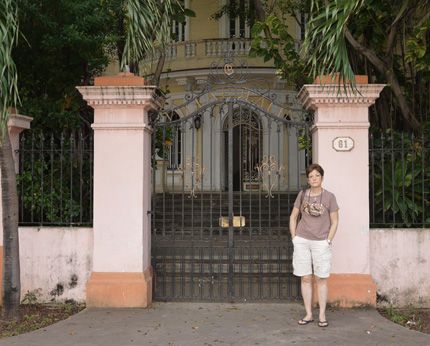
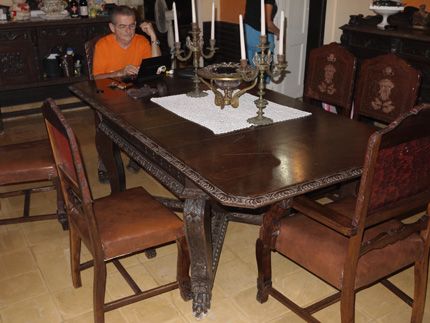
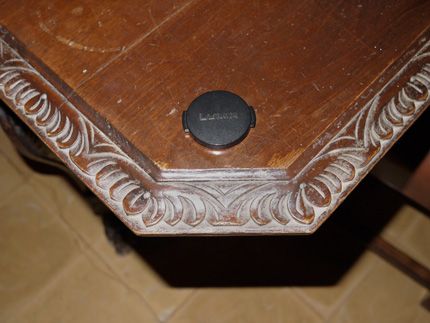

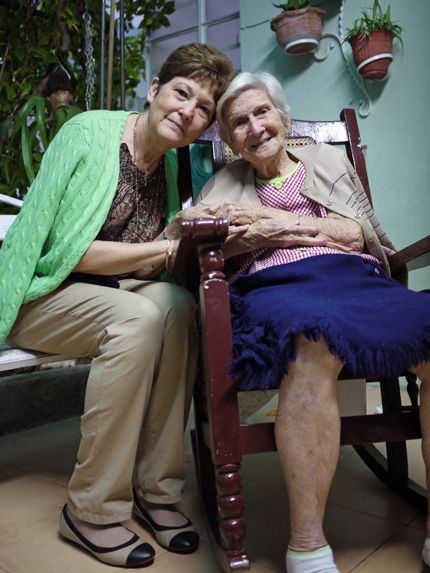








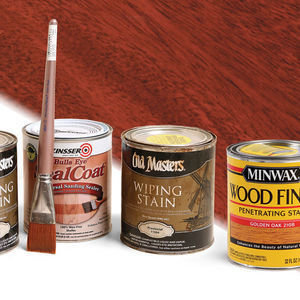
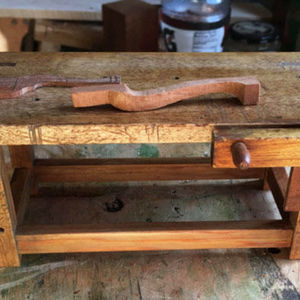











Comments
Very nice shoptalk episode. Made me want to share my own fellow Cuban-American woodworker story. I'm a Cuban-American whose hobby is woodworking, and my wife's family background is Dominican. My wife's grandfather left her mother her great grandfather's Dominican mahogany parlor furniture set from the early 1900's, which we had shipped to us in the US a few years ago. It was manufactured by Pineiro Furniture, and the 6 pieces were well used and some slightly sun bleached from being in the entry hall, so I decided to restore the finish. Knowing of the rarity of the wood, and the familial connection, I approached the project with a sense of reverence. Though I didn't 'work' the wood, I truly enjoyed finishing it. The first thing that caught my attention was the grain as compared to the average mostly straight-grained Honduran & Philippine mahogany I'd previously worked with for shelves & molding. Sanding it created a soft red dust it almost hurt to vaccum! I decided to use a Sam Maloof finish and even called Maloof woodworking and spoke to Larry to confirm whether I was applying it right! They're better than new (and old) IMO.
While you probably can't claim your family's mahogany furniture from Cuba yet Ed, if you're ever in DR you might want to look for antique pieces made of what the locals know well as 'Caoba Centenaria', and bring a few pieces back with you to rework. It's certainly easier and cheaper than trying to get genuine Cuban or Dominican mahogany lumber. Not sure how you would ensure authenticity without really knowing the market, though. One man's junk...
Good show guys, my first but not my last. The segment on radial arm saws was interesting. I still own my old Sears and I have the planer head and router collet. This was my first big investment in equipment and it was a do all for me for many years. It now collects more dust than it ever makes.
InNJ: Very interesting. At the time that my mother and grandparents left Cuba, they had my uncle go into their home (the one my mother is pictured standing in front of) to retrieve as much furniture as they could. Many of those old rococo antiques are still in my aunt and uncle's bedrooms. Unfortunately, the finishes have suffered greatly over the years, but it was fun to see mom's reaction to coming across all the old pieces that were in her bedroom as a kid. Cheers,
Ed
I would like to ask if any of you know if some of this mahogany made it to mexico. Because i happen to be lucky enough to have had my grandmothers dresser passed on to me.
Since i was a kid, my grandmother would tell her story of how my grandfather saved all his pennys (i ment pesos) back in 1915 to have a dresser and a huge trunk made out of mahogany.
While attending woodworking school in mexico i took the trunk to class, thats were my teacher told me it was made of Caoba Centenaria.
Now could this be Honduran or Philippine mahogany or maybe cuban or dominican mahogany.
How can i tell them apart?
BLASMALDO: I'm no wood science expert so take what I say with a grain of salt. That said, the references I've found to "Caoba Centenraia" all seem to point to the Dominican Republic. At the end of the day, the wood species Swietenia mahogani grows all over the Caribbean, so I think one would be hard pressed to be able to figure out country of origin unless they could really trace a piece back to it's maker.
epirnik my question was if any of that caoba made it to mexico.
About the maker of the furniture i knew who he was my grandma lived next door to him.
Thinking about it i guess it really does not matter the important thing is that i get to pass on these works of art to the next generation and hope that they have the same appreciation for the skill and craftsmanship that these fine woodworkers had no matter their nationality.
Thanks again for having these type of discusions.
keep up the good work.
We have been fortunte to do restoration or conservation work on Cuban mahogany furniture over the years. It is the finest wood to carve, work with and finish..
BLASMALDO, I'm in Mexico too. Where did you go to woodworking school in Mexico?
Log in or create an account to post a comment.
Sign up Log in